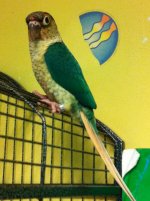amandateixeira
New member
- Aug 6, 2011
- 5
- 0
Hello, I recently purchased this conure, from what I've been told it is a blue pineapple, but from research it looks a little different them the pictures I've seen. just hoping for some opinions and insight?
Thanks!!!!!!
Thanks!!!!!!
Attachments
Last edited:

